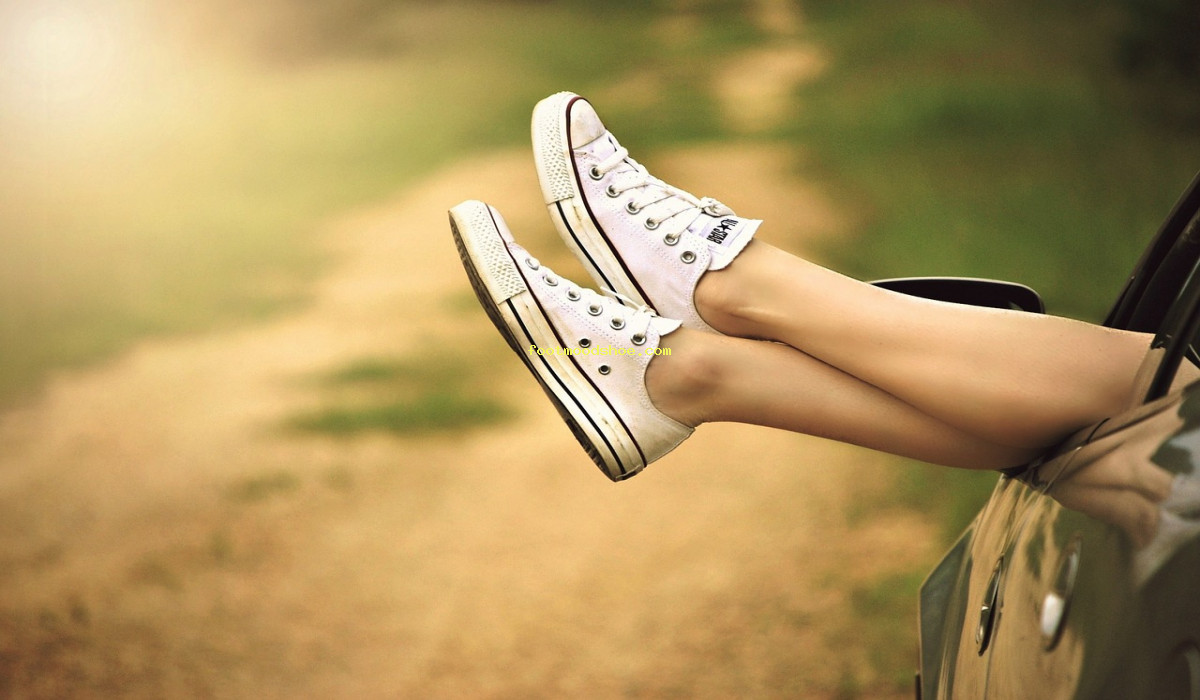Feet First is a nonprofit that promotes foot health and the benefits of running shoes. Their mission is to prevent and treat foot and ankle problems by providing education, services, and research.
The Impact of Feet First: Prioritizing Foot Health with the Benefits of Running Shoes on Health
The health benefits of running are well-documented, and they extend to every system in the body. But while the cardiovascular benefits of running are well-known, the impact of running on foot health is often overlooked. Yet the feet are the foundation of the runner’s body, and strong, healthy feet are essential to achieving optimum performance and avoiding injury.
Fortunately, there are many ways to promote foot health, including investing in a good pair of running shoes. Good running shoes provide support and cushioning for the feet, and they can help to prevent injuries. They also make running more comfortable, which can help to encourage people to stick with their running routines.
The benefits of running shoes extend beyond foot health. They also provide benefits for the legs, hips, and back. Running shoes with good cushioning can help to absorb the impact of running, which can reduce the risk of injuries to the knees, hips, and back. In addition, good running shoes can improve posture and alignment, which can help to prevent pain in the lower back and legs.
There are many different types of running shoes on the market, and it is important to choose a pair that is right for your feet. If you have flat feet, for example, you will need a different type of shoe than someone with high arches. Your best bet is to visit a local running store and have a professional help you choose the right shoes for your feet.
When it comes to foot health, it is important to take a “feet first” approach. This means prioritizing foot health and investing in a good pair of running shoes. Taking care of your feet will help you avoid injuries and enjoy the many benefits of running.
The Impact of Feet First: Prioritizing Foot Health with the Benefits of Running Shoes on Society
Society often looks down on running as a frivolous activity that is not worthy of serious consideration. This is especially true of runners who are not elite athletes. But runners of all levels can benefit from taking a “feet first” approach to their running.
Investing in a good pair of running shoes is one way to take care of your feet. Good running shoes provide support and cushioning for the feet, and they can help to prevent injuries. They also make running more comfortable, which can help to encourage people to stick with their running routines.
The benefits of running shoes extend beyond foot health. They also provide benefits for the legs, hips, and back. Running shoes with good cushioning can help to absorb the impact of running, which can reduce the risk of injuries to the knees, hips, and back. In addition, good running shoes can improve posture and alignment, which can help to prevent pain in the lower back and legs.

There are many different types of running shoes on the market, and it is important to choose a pair that is right for your feet. If you have flat feet, for example, you will need a different type of shoe than someone with high arches. Your best bet is to visit a local running store and have a professional help you choose the right shoes for your feet.
When it comes to foot health, it is important to take a “feet first” approach. This means prioritizing foot health and investing in a good pair of running shoes. Taking care of your feet will help you avoid injuries and enjoy the many benefits of running.
The Impact of Feet First: Prioritizing Foot Health with the Benefits of Running Shoes on the Environment
The environmental impact of running shoes is often overlooked. But the fact is, the production of running shoes has a significant impact on the environment. The manufacturing of running shoes requires the use of water, chemicals, and energy, and the disposal of running shoes can also have a negative impact on the environment.
Fortunately, there are many ways to reduce the environmental impact of running shoes. One way is to choose eco-friendly running shoes. These shoes are made with sustainable materials, and they are designed to be more environmentally friendly. Another way to reduce the impact of running shoes is to choose shoes that are durable and long-lasting. This way, you won’t have to replace your shoes as often, and you can avoid sending them to the landfill.
When it comes to the environment, it is important to take a “feet first” approach. This means choosing eco-friendly running shoes and investing in shoes that will last. Taking care of your feet will help you reduce your impact on the environment.
The Impact of Feet First: Prioritizing Foot Health with the Benefits of Running Shoes on the Economy
Increased Popularity in Functional and Performance Running Shoes
There has been an increased popularity in functional and performance running shoes in recent years. This is due to the fact that these shoes offer a number of benefits that traditional running shoes do not. For example, functional and performance running shoes are designed to provide more support and stability to the feet and ankles. This can help to prevent injuries, and can also improve running performance. In addition, these shoes are often lighter and more comfortable than traditional running shoes. As a result, they are becoming increasingly popular with runners of all levels.
The Rise of the Minimalist Running Shoe
Minimalist running shoes have also become increasingly popular in recent years. These shoes are designed to provide a more natural and comfortable running experience. They are often lighter and more flexible than traditional running shoes, and they allow for a greater range of motion. This can help to improve running form and prevent injuries. In addition, minimalist shoes often provide a more comfortable fit than traditional running shoes.
The Decline of the Traditional Running Shoe
As a result of the increased popularity of functional and performance running shoes, traditional running shoes have seen a decline in popularity. This is because traditional running shoes often do not provide the same level of support and stability that more modern shoes do. In addition, traditional running shoes are often heavier and less comfortable than more contemporary shoes. As a result, many runners are now choosing to wear more modern shoes that offer a better fit and more support.
The Future of Running Shoes
The future of running shoes looks to be very promising. As more and more runners are looking for shoes that offer more support and stability, manufacturers will continue to create new and innovative designs that meet these needs. In addition, the trend towards minimalist and more natural running shoes is likely to continue. As a result, we can expect to see more and more runners choosing to wear these types of shoes in the future.

How can running shoes help improve my foot health?
Wearing the proper type of running shoe for your foot type can help prevent injuries and improve foot health. Running shoes should be comfortable, provide good support, and have a shock-absorbent sole to protect your feet from the impact of running.
What are the different types of running shoes?
There are three main types of running shoes: neutral shoes, stability shoes, and motion control shoes. Neutral shoes are best for runners with high arches or normal feet, while stability shoes are best for runners with low arches or flat feet. Motion control shoes are best for runners with very flat feet or high arches.
How often should I replace my running shoes?
Most experts recommend replacing your running shoes every 300-500 miles, or every 6 months to a year, whichever comes first.
What are some common injuries that can be caused by running shoes?
Wearing shoes that do not fit well or provide proper support can cause a variety of injuries, including blisters, calluses, bunions, hammertoes, and Achilles tendonitis.
Can I wear my running shoes for other activities?
Yes, you can wear your running shoes for other activities, such as walking, hiking, or playing tennis. However, you should not wear them for activities that require specific footwear, such as soccer or basketball.
What are some tips for choosing the right running shoes?
When choosing running shoes, it is important to consider your foot type, running style, and the type of surfaces you will be running on. You should also make sure the shoes are comfortable and provide good support.
How can I tell if my running shoes are too small?
If your running shoes are too small, you may experience blisters, calluses, or bunions. Your shoes should also feel comfortable and not be too tight.
How can I tell if my running shoes are too big?
If your running shoes are too big, you may experience heel slippage or foot pain. Your shoes should also not feel too loose.
What are some tips for breaking in new running shoes?
When breaking in new running shoes, it is important to gradually increase the amount of time you wear them. You should also wear them for short distances at first and avoid wearing them for long periods of time.
What should I do if I experience foot pain while wearing my running shoes?
If you experience foot pain while wearing your running shoes, you should see a podiatrist or other medical professional. You may also want to try a different type of shoe.
Feet First: Prioritizing Foot Health with the Benefits of Running Shoes
Many people believe that running is bad for your feet. However, this is not the case. In fact, running can actually improve foot health. Here are some of the benefits of running shoes:
Improved Foot Health: Running shoes are designed to protect your feet from the impact of running. This can help to prevent injuries and improve foot health.
Improved Joint Health: Running shoes can also help to improve joint health. The cushioning in running shoes can help to absorb the impact of running, which can help to reduce the risk of joint injuries.
Improved Circulation: Running shoes can also help to improve circulation. The increased blood flow can help to reduce swelling and improve foot health.
Improved Balance: Running shoes can also help to improve balance. The increased stability can help to prevent falls and improve foot health.
In The Bottom Line
The benefits of running shoes are clear. Running shoes can help to improve foot health, joint health, circulation, and balance. If you are looking for a way to improve your overall health, then consider investing in a pair of running shoes.

